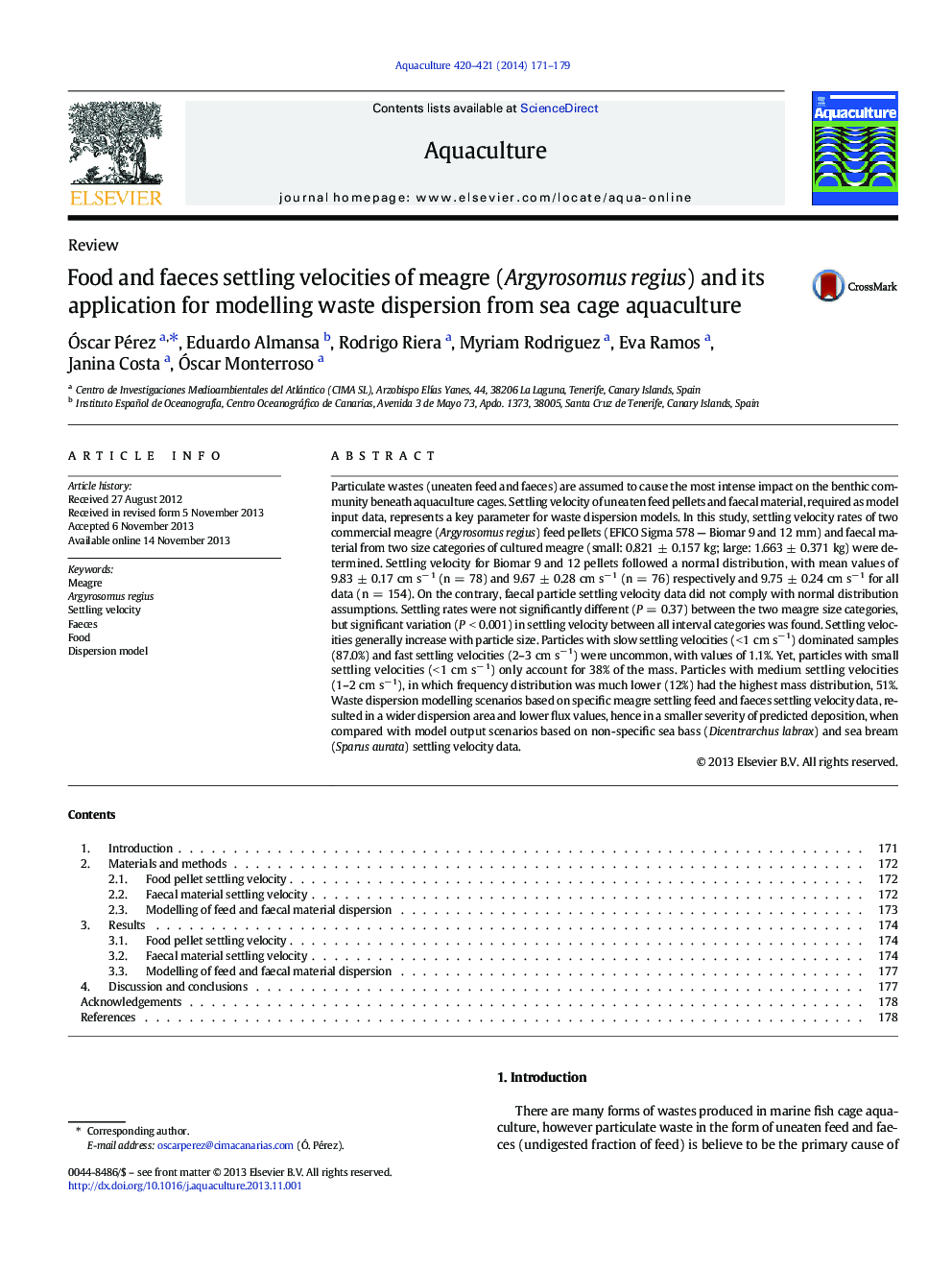| کد مقاله | کد نشریه | سال انتشار | مقاله انگلیسی | نسخه تمام متن |
|---|---|---|---|---|
| 2422005 | 1552862 | 2014 | 9 صفحه PDF | دانلود رایگان |

• Settling velocity rates of meagre feed pellets and faecal material were determined.
• Settling velocity for pellets followed a normal distribution.
• Faecal particle settling velocity data did not comply with normal distribution.
• Use of specific meagre data resulted in a smaller severity of predicted deposition.
Particulate wastes (uneaten feed and faeces) are assumed to cause the most intense impact on the benthic community beneath aquaculture cages. Settling velocity of uneaten feed pellets and faecal material, required as model input data, represents a key parameter for waste dispersion models. In this study, settling velocity rates of two commercial meagre (Argyrosomus regius) feed pellets (EFICO Sigma 578 — Biomar 9 and 12 mm) and faecal material from two size categories of cultured meagre (small: 0.821 ± 0.157 kg; large: 1.663 ± 0.371 kg) were determined. Settling velocity for Biomar 9 and 12 pellets followed a normal distribution, with mean values of 9.83 ± 0.17 cm s− 1 (n = 78) and 9.67 ± 0.28 cm s− 1 (n = 76) respectively and 9.75 ± 0.24 cm s− 1 for all data (n = 154). On the contrary, faecal particle settling velocity data did not comply with normal distribution assumptions. Settling rates were not significantly different (P = 0.37) between the two meagre size categories, but significant variation (P < 0.001) in settling velocity between all interval categories was found. Settling velocities generally increase with particle size. Particles with slow settling velocities (< 1 cm s− 1) dominated samples (87.0%) and fast settling velocities (2–3 cm s− 1) were uncommon, with values of 1.1%. Yet, particles with small settling velocities (< 1 cm s− 1) only account for 38% of the mass. Particles with medium settling velocities (1–2 cm s− 1), in which frequency distribution was much lower (12%) had the highest mass distribution, 51%. Waste dispersion modelling scenarios based on specific meagre settling feed and faeces settling velocity data, resulted in a wider dispersion area and lower flux values, hence in a smaller severity of predicted deposition, when compared with model output scenarios based on non-specific sea bass (Dicentrarchus labrax) and sea bream (Sparus aurata) settling velocity data.
Journal: Aquaculture - Volumes 420–421, 15 January 2014, Pages 171–179